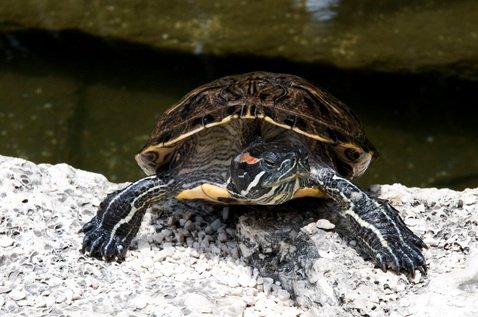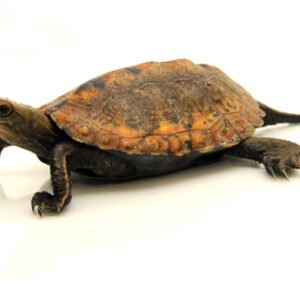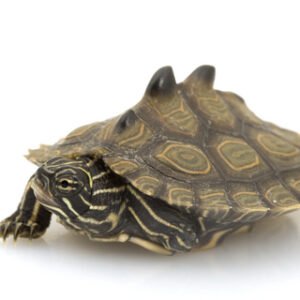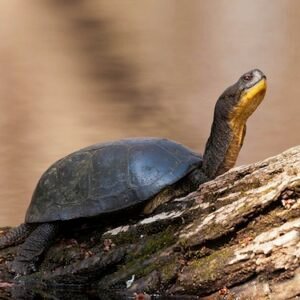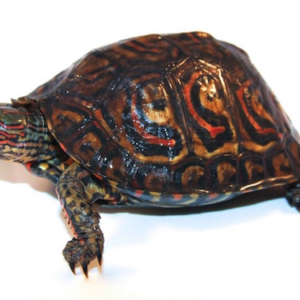Characteristics and Habitat of the Florida Red-Bellied Turtle
The Florida Red-Bellied Turtle (Pseudemys nelsoni) is a distinct species known for its vibrant and striking physical appearance. One of its most notable features is the reddish-orange hue of its plastron, or lower shell, which contrasts sharply with the darker hues of the upper shell. Adult turtles typically measure between 10 to 12 inches in shell length, though some may grow larger. Their elongated bodies and streamlined shells make them adept swimmers, allowing them to thrive in diverse aquatic environments. Additionally, the species displays a unique pattern of yellow or white stripes on its head and limbs, further distinguishing them from other local turtle species.
Florida Red-Bellied Turtles primarily inhabit freshwater ecosystems such as ponds, marshes, swamps, and lakes throughout Florida. They are particularly drawn to environments that provide ample vegetation and basking areas, which are crucial for thermoregulation. These turtles are known to bask on logs and rocks, absorbing sunlight to maintain their body temperature. In terms of diet, Florida Red-Bellied Turtles are omnivorous, feeding on aquatic plants, algae, insects, and small fish, which they forage from their habitat. This adaptability in eating habits allows them to thrive in a variety of settings where food sources may change seasonally.
When it comes to nesting behaviors, female turtles typically seek sandy areas near water bodies, laying eggs in small clutches. Unfortunately, habitat loss due to urban development and pollution poses significant threats to their populations. Conservation initiatives are underway to protect these turtles and their natural habitats, emphasizing the importance of preserving Florida’s diverse ecosystems. Such measures are essential not only for the survival of the Florida Red-Bellied Turtle but also for the broader ecological balance of the areas they inhabit.
Conservation Status and Threats to the Florida Red-Bellied Turtle
The Florida Red-Bellied Turtle (Pseudemys nelsoni) faces numerous threats that impact its conservation status. Currently, the population trends indicate a decline, primarily due to a combination of habitat destruction, pollution, and illegal trade. These turtles inhabit freshwater ecosystems such as ponds, swamps, and rivers in Florida, making them vulnerable to changes in their natural habitats. The rapid urbanization and expansion of agricultural areas have led to significant habitat loss, which directly affects their breeding and feeding grounds.
Pollution is another critical factor threatening the survival of the Florida Red-Bellied Turtle. Contaminants from agricultural runoff, industrial discharges, and plastic waste can degrade water quality, posing health risks to the turtles and their food sources. Additionally, the illegal pet trade poses a serious risk, as individuals capture these turtles for their aesthetic value, further diminishing wild populations.
Climate change has emerged as a more recent but increasingly impactful threat. Rising temperatures and altered weather patterns can disrupt the delicate balance of the turtle’s habitat, affecting the availability of nesting sites and the temperature regulation needed for successful hatching. Moreover, extreme weather events, such as hurricanes, can lead to habitat destruction and disorientation of the turtles during their migratory patterns.
In response to these challenges, various conservation programs are underway to protect the Florida Red-Bellied Turtle. Initiatives include habitat restoration efforts, legal protection through state and federal laws, and educational outreach campaigns aimed at raising awareness within communities. Involving local stakeholders in conservation efforts is essential to creating a collaborative approach to safeguarding this species. By understanding the challenges faced by the Florida Red-Bellied Turtle, individuals and organizations can take meaningful actions to support its preservation and ensure a sustainable future for this unique turtle and its habitats.

